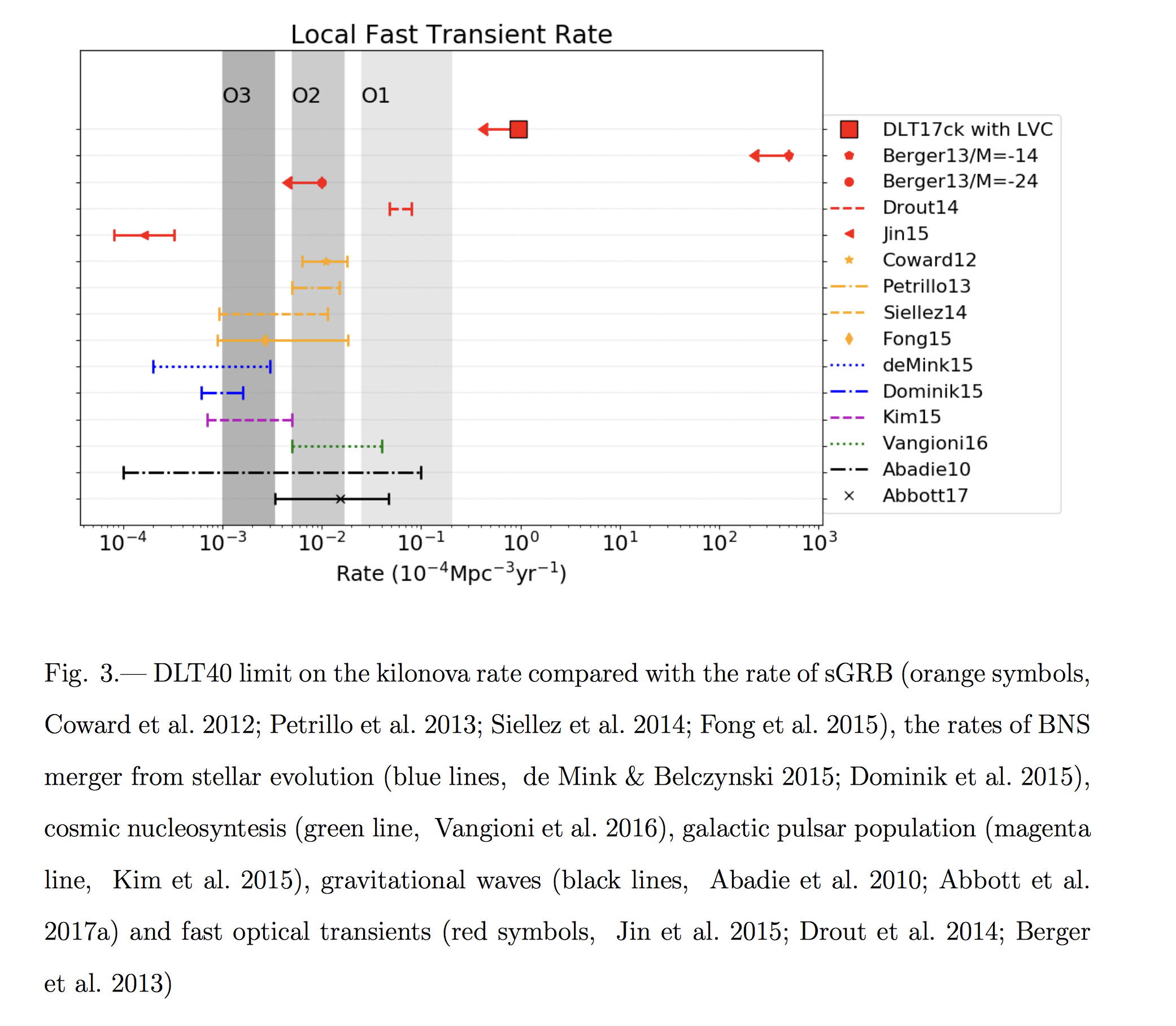Padova-Asiago Supernova Group
Highlights
An empirical limit on the kilonova rate from the DLT40 one day cadence Supernova Survey
Yang, S. et al. 2017, ApJ 851, L48 (link to pdf)
Binary neutron star mergers are important to understand stellar evolution, the chemical enrichment of the universe via the r-process, the physics of short gamma-ray bursts, gravitational waves and pulsars. The rates at which these coalescences happen is uncertain, but it can be constrained in different ways. One of those is to search for the optical transients produced at the moment of the merging, called a kilonova, in ongoing SN searches. However, until now, only theoretical models for kilonovae were available and their rates have been computed without knowing what a kilonova actually looks like. The recent kilonova discovery AT~2017gfo/DLT17ck gives us the opportunity to constrain the rate of kilonovae using the light curve of a real event. We constrain the rate of binary neutron star mergers using the DLT40 Supernova search. Excluding AT~2017gfo/DLT17ck, which was discovered thanks to the aLIGO/aVirgo trigger, no other transients similar to AT~2017gfo/DLT17ck have been detected during the last 13 months of daily cadence observations of $\sim$ 2200 nearby ($<$40 Mpc) galaxies. We find that the rate of BNS mergers is 0.48 kilonovae per 100 years per $10^{10}$ $L_{B_{\odot}}$ or, in volume, $<0.94\pm0.08\,10^{-4}\,\rm{Mpc^3}\,\rm{yr^{-1}}$, consistent with previous BNS coalescence rates. Based on our rate limit, and the sensitivity of aLIGO/aVirgo during O2, it is very unlikely that kilonova events are lurking in old pointed galaxy SN search datasets. 98
